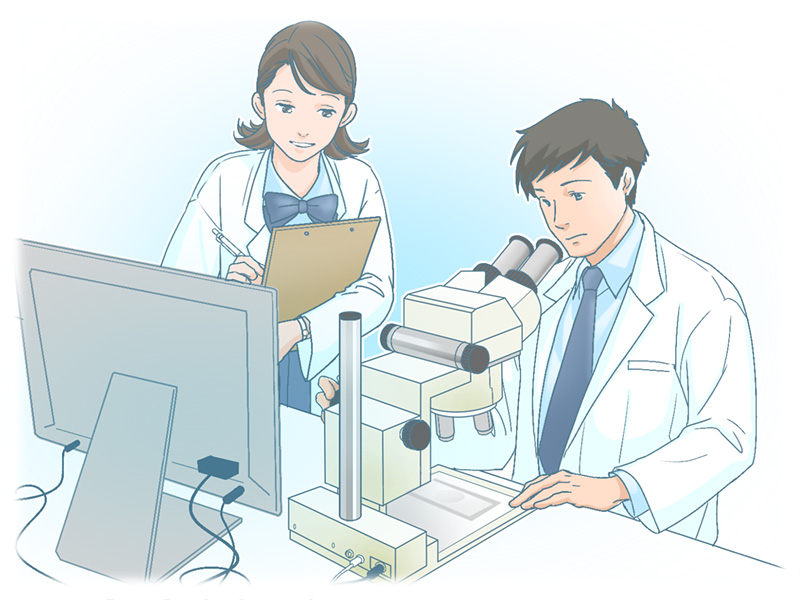1) Collecting data
 The types of information to be gathered include the amount of chemicals synthesized in the lab, the number of organisms found in field observations, microscopic image data, numerical values such as wind speed and direction, and the results from questionnaires.
The types of information to be gathered include the amount of chemicals synthesized in the lab, the number of organisms found in field observations, microscopic image data, numerical values such as wind speed and direction, and the results from questionnaires.
By the time you go around to collect it, it is important that you consider the amount of data you need to reach a conclusion. There may be no significant difference (an inherently meaningful difference not caused by chance or error) in a small number of samples, thus no conclusion reached after careful experimentation. In biological experiments especially, one must exercise care because individual variations are large. In addition, one must consider whether the right equipment has been selected for data collection, whether the user is familiar with its use, and whether the accuracy value desired with it can be determined correctly. If the amount of data and its collection method are not appropriate, problems could occur such as not being able to obtain an answer for the research purpose or not being able to confirm the data’s reproducibility.
2) Record and store research processes and results accurately in research notes and electronic files
The study procedure should be recorded as research notes (also called “experiment or lab notes”). In it, the experimental method and its result are recorded every time. A research note could be used to compile study outcomes after a sufficient number of experiments have been completed. It can also be referenced by others to perform the same work. Research notes should be recorded as truthfully as possible, even when the experiment is unsuccessful or the expected results not available. This is because it can then provide clues to improve experimental methods and lead to other discoveries not initially anticipated (a so-called “serendipity”). It could also serve as evidence that you’ve done the research honestly.
3) Analysis

When looking over your data, be sure to understand and use the “Statistics” section. For example, examine whether there is a statistically significant difference in the results between the group that used drug A and the group that did not. Even if you conducted a difficult experiment, the credibility of the study could be questioned without appropriate knowledge about the problems of data analysis. Examine data also with advice from your research leader.
